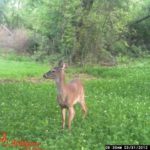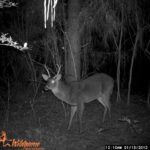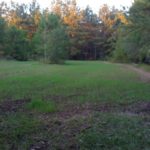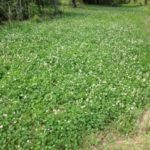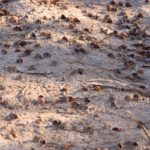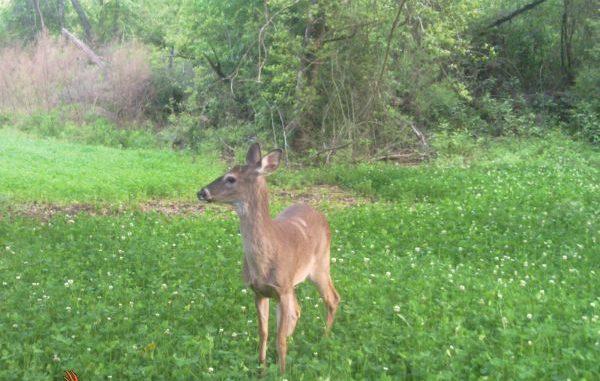
The experiment with small green patches continues, with new plantings and reviews of new seed varieties.
I pulled my game cam card and anxiously rushed back to the house to see what kind of horn porn awaited me.
Of all the plots former Louisiana Sportsman editor Todd Masson and I began to manage four years ago, none of them ever had the kind of bucks on the camera cards that stood sentry over them as did this little spot about two miles down the road.
Two years ago, we tried to include it into what could only be loosely labeled as our deer management plan by planting a very narrow strip of oats, winter wheat and turnip greens amongst the towering trunks of a pine plantation.
We never saw a deer over that downright disaster of a plot, but, by expanding our game cameras to look over some nearby scrapes, we did learn that this plain-vanilla tract of pine trees held some freakishly big bucks — at least in our eyes.
The only problem was that the freaks only liked to come out at night.
Freakishly big he was not, but my card held several images of what looked to be a fairly decent 6-point. Since he was over my corn pile at 12:10 a.m. on Jan. 13, I decided that I would hunt the cemetery stand, the same stand I had hunted earlier that same morning.
I had watched two does briefly nibble on some Evolved Habitats Bones & Beards just six hours after the buck made his camera debut two miles away.
Daylight deer are better than midnight deer, so I decided to ride the cemetery stand again in hopes of taking a doe, as the season was getting late.
The cemetery stand is one of the original plots down a ridge behind a family cemetery that Masson and I planted in 2008, and we first documented it in “Postage Stamp Plots” in the August 2009 issue of Louisiana Sportsman.
We had moved the ladder stand from its original and very exposed location on a pine tree right off the southeast edge of the plot to a young water oak at the top of the ridge more directly to the east.
A little chainsaw work between the stand and the plot gave me three lanes through which I could shoot.
I climbed in as quietly and unobtrusively as I could and waited.
As the evening wore on and the cemetery plot remained empty, I started wishing I had hunted the pine plantation two miles down the road. I at least knew there was a buck working the area, and who knows? I might have gotten lucky.
My thoughts were interrupted by a deer moving in to the cemetery plot directly from the south like he owned the joint. Yes, I said he.
I readied my Smith & Wesson .270 iBolt rifle, and held it steady in the middle shooting lane. This buck looked like he was boss and, although he wasn’t running, definitely wasn’t going to stop to give me a shot.
He hit the opening, and I watched him freeze through my scope as I gave him one of those “burrp” sounds that I see hunters on TV doing all the time. He had taken his last step.
For those hunters interested in horn porn, this small basket 6-point wasn’t anything special. But he was the culmination of our efforts over the last four years.
This 130-pound 2 ½-year-old buck was the first buck we had killed that was not a spike.
The only problem was that we knew he really wasn’t ours. This was the first time we had even seen him on my property, so we knew he was a rutting deer that was out making the rounds.
Then it hit me.
I inspected the set of horns I was holding in my hands and thought they looked vaguely familiar.
A quick look at my game cam files, and I found the images of the 6-point from the pine plantation two miles down the road.
This was that deer.
At 12:10 a.m., in the wee hours of Jan. 13, this buck was eating corn on my property two miles away. At 5:15 p.m. on Jan. 13, he was lying dead in the cemetery plot because he couldn’t control his hormones.
Then I started feeling a little better that maybe our food-plot program had played more of a role in my killing of this buck than I originally thought.
Yeah, he wasn’t “ours,” in that my property wasn’t his core area. But plenty of does do call my property their core area. He was looking for those does that call my place home, and he just invited himself right on in.
Were it not for our postage-stamp plots, I would not have killed this buck.
We took one other deer off of our plots last season. My nephew Zach Ginn killed his first deer, a 110-pound doe, off of a new plot we put in called the Fruit Stand (read more about this new plot in the sidebar).
Other than that, deer sightings were few and far between during the 2011-2012 season, and the Main Lane planted right behind my house grew tall and rank except in very small areas sprinkled right on the edges of the woods and clear-cut.
Like most other Louisiana hunters, our main problem with getting deer into the plots was the copious amounts of acorns that littered the ground.
Because they usually get gobbled up as soon as they hit the ground, I have never seen white oak acorns lying on the ground long enough to sour, but that’s exactly what happened last season.
All those acorns meant the deer didn’t have to come out and expose themselves in our plots.
The one thing that did stand out last season about our postage-stamp plots was the number of game camera shots of multiple deer eating at the same time, and that our does are now having more twin fawns than ever before.
At one point, Masson and I installed a Plot Watcher time lapse camera on the edge of the Fruit Stand, and it recorded several late-evening shots of eight, nine and sometimes 10 deer coming out and feeding right on its edge.
As of late June, we were watching our summer food plots of iron clay peas, soybeans and black oil sunflowers getting devoured as soon as they sprout, and our plots of deer vetch and Alyce clover are just now starting to fill in.
There are troughs filled with 50 percent protein pellets and 50 percent corn, but that hasn’t been the draw we thought it would be.
However, a recent check of the game camera watching over the clover in the Bat Cave showed that there are two bucks starting to grow some horns. Who knows what the end result will be, but they seem to have some decent-sized bases.
Home-grown bucks that include our postage stamp plots in their core area?
After four years at this deer-management thing, that’s all the horn porn I care to see.
